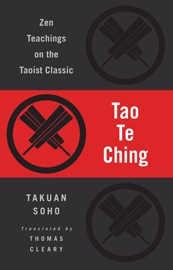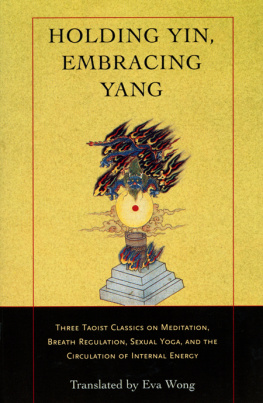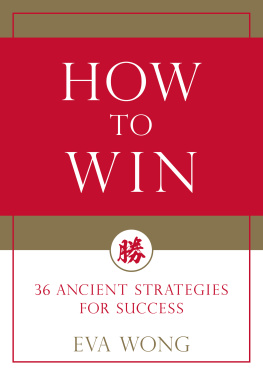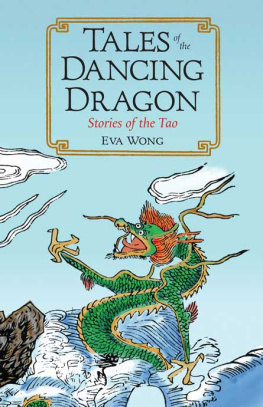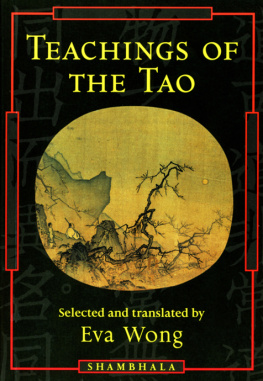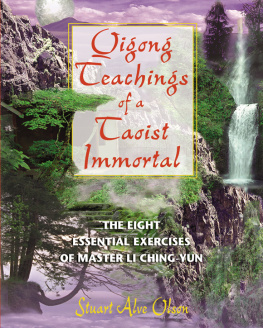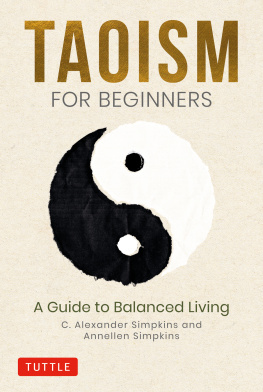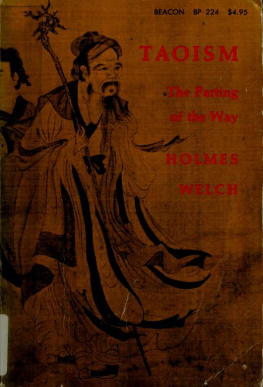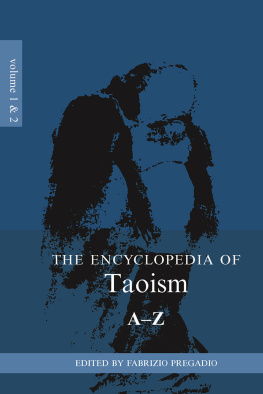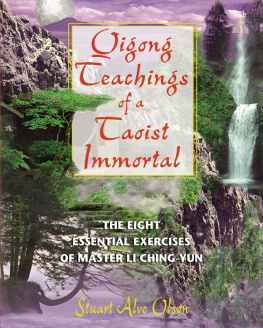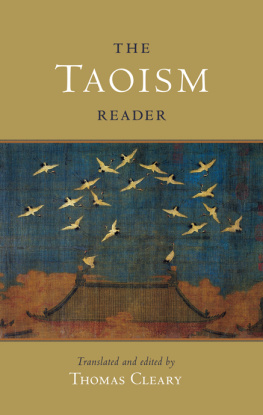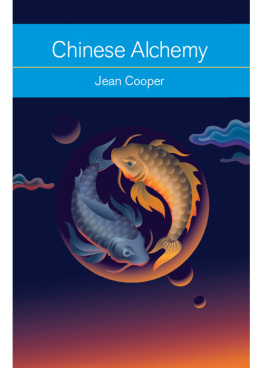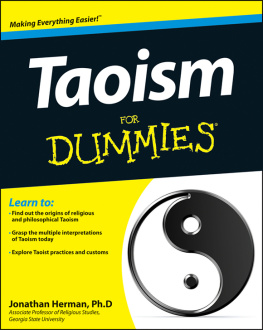This book enables the reader to examine the seemingly disparate elements of Taoism as well as the thread that unifies this living tradition, through the eyes and heart of a scholar-practitioner.
Gary D. DeAngelis, PhD, editor of Teaching the Daode Jing
ABOUT THE BOOK
For the first time, the great depth and diversity of Taoist spirituality is introduced in a single, accessible manual.
Taoism, known widely today through the teachings of the classic Tao Te Ching and the practices of tai chi and feng-shui, is less known for its unique traditions of meditation, physical training, magical practice and internal alchemy. Covering all of the most important texts, figures, and events, this essential guide illuminates Taoisms extraordinarily rich history and remarkable variety of practice. A comprehensive bibliography for further study completes this valuable reference work.
EVA WONG is an independent scholar and a practitioner of the Taoist arts of the Pre-Celestial Way and Complete Reality lineages. She has written and translated many books on Taoism and related topics, including Seven Taoist Masters, Lieh-tzu, and A Master Course in Feng-Shui.
Sign up to learn more about our books and receive special offers from Shambhala Publications.

Or visit us online to sign up at shambhala.com/eshambhala.
TAOISM
An Essential Guide
Eva Wong

SHAMBHALA
Boston & London
2011
Shambhala Publications, Inc.
Horticultural Hall
300 Massachusetts Avenue
Boston, Massachusetts 02115
www.shambhala.com
1997 by Eva Wong
Cover art: Detail of Spring Dawn Over the Elixir Terrace, by Lu Guang. China, ca. 1369. Image copyright The Metropolitan Museum of Art/Art Resource, NY.
This book was previously published as The Shambhala Guide to Taoism.
All rights reserved. No part of this book may be reproduced in any form or by any means, electronic or mechanical, including photocopying, recording, or by any information storage and retrieval system, without permission in writing from the publisher.
Library of Congress Cataloging-in-Publication Data
Wong, Eva, 1951
Taoism: an essential guide/Eva Wong.
p. cm.
Includes bibliographical references and index.
eISBN 978-0-8348-2738-7
ISBN 978-1-59030-882-0 (pbk.: alk. paper)
1. Taoism. 2. Tao. I. Title.
BL1920.W66 2011
299.514dc22
2010049929

| FRONT COVER: Spring Dawn Over the Elixir Terrace. China, Yuan dynasty, ca. 1369. Hanging scroll; ink on paper. Image: 24 x 10 in. (61.6 x 26 cm). Overall with mounting: 87 x 17 in. (222.3 x 44.8 cm). Overall with knobs: 87 x 20 in. (222.3 x 52.4 cm). Photographed by Malcolm Varon. Image The Metropolitan Museum of Art / Art Resource, NY. |
M ANY PEOPLE WILL EXPERIENCE, at least once in their lifetime, the urge to venture beyond the everyday world of the mundane into the world of the spirit. These journeys into the spiritual world often take us into a universe we normally do not encounter in our daily lives, and allow us to explore regions of our consciousness that we have not before known.
This book is a guide to the spiritual landscape of Taoism. In it you will encounter events in the history of Taoism, meet the sages who wrote the Taoist texts, be introduced to the various schools of Taoist thinking, and get a feel for what it means to practice Taoism today.
The spiritual landscape of Taoism is a kaleidoscope of colors and sounds. It is also a land of silence and stillness. It can be friendly and attractive, and at the same time challenging and dangerous. In this book, you will be traveling through the spiritual terrain of Taoism. On your journey, you will see shamans dressed in animal skins dancing the patterns of the stars as they fly to the sky and tunnel beneath the earth; you will see talismans displaying symbols of power that are designed to heal, protect, and ward off malevolent spirits; you will see people sitting, standing, or sleeping in unusual postures, cultivating the breath of life and longevity; you will see colorful tapestries, images of deities and immortals, huge brass cauldrons, altars with sticks of incense, and oil lamps burning eternal flames. On this journey, you will see, etched on bamboo sticks, hexagrams, the symbols of change, used by diviners to interpret the pattern of events in the universe; you will also see ordinary people tending the aged and the sick, teaching the young, and helping others who are less fortunate than themselves; you will hear the loud clang of cymbals and drums, the shrill and melodious sound of flutes, and slow, rhythmic voices chanting to the beat of a wooden block. You will hear the silence of a meditation hall, the soft gait of feet walking on the flagstones of monastic cloisters, and the occasional sound of a bell amid the rustle of leaves. All these are features in the spiritual landscape of Taoisma tradition of wisdom accumulated over thousands of years that has changed human consciousness, and yet been changed by it.
This book is a guide, and a guide differs from a textbook or an anthology of translated texts.
First, a true guide is based on the personal experience of someone who has traveled the terrain; one cannot write a guide about places one has not been to. Information contained in a guide is not based on book knowledge alone but on experience.
Second, a true guide has a perspective and does not pretend to be objective. What is seen is never independent of the observer. As a guide to the spiritual landscape of Taoism, this book shows things that I have experienced and enjoyed.
Third, a true guide does not pretend to be complete. Any landscape, physical or spiritual, is rich beyond imagination. This book is meant to give you enough information to get started. It is a map and field guide to a territory; it is not the territory itself.
Finally, a guide alerts travelers to possible dangers. The spiritual landscape is both attractive and forbidding, and travelers need to be aware of hazards along the way. Therefore, throughout the book, I shall point out which are the safest paths and which are the hazardous routes in the spiritual terrain of Taoism.
This book is divided into three parts: History of Taoism, Systems of Taoism, and Taoist Practices.
History of Taoism
It is important to know the history of a wisdom tradition and be connected to its origins. Part One presents a brief history of Taoism.
We begin by looking at how the shamans of ancient China laid down the foundations of Taoism. Several thousand years ago, before there was the idea of the Tao and before a philosophy was built around it, tribal leaders made offerings to the sky, earth, mountains, valleys, and rivers to renew the bond between humanity and the sacred powers. They danced movements of power that took them to distant realms to gain knowledge and wisdom. We can still see some of these practices today in Taoist religious ceremonies and in the moving meditation and exercises of internal health.
Next we turn to the Classical Periodthat span of Chinese history between the eighth and third centuries BCE. During this time lived some of the greatest philosophers of China: Lao-tzu, Confucius, Han-fei-tzu, Chuang-tzu, Sun-tzu, and Mo-tzu. This era gave us the Tao-te ching and its philosophy of nonaction (
Next page
